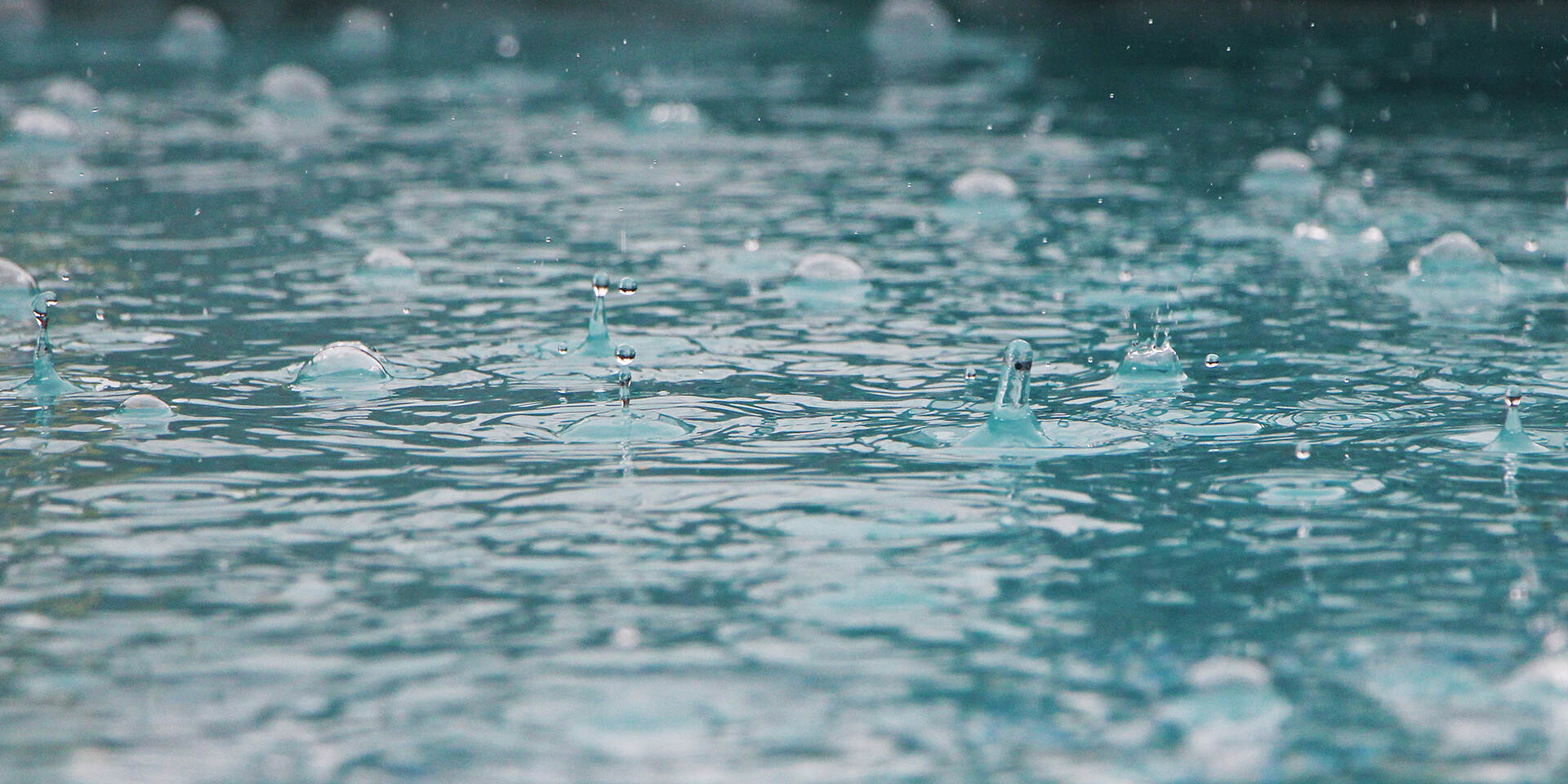
Rainfall is a natural phenomenon that plays a vital role in sustaining life on Earth. It is fascinating to explore the patterns and intricacies of how rain falls across different regions. From arid deserts to lush rainforests, rainfall patterns vary greatly, and understanding them can provide valuable insights into climate, ecosystems, and human societies. In this article, we will delve into 16 unbelievable facts about rainfall patterns that will leave you in awe of the wonders of nature. Whether it’s the highest recorded rainfall, the driest place on Earth, or the incredible ways in which rain shapes landscapes, these facts will shed light on the fascinating world of precipitation. So grab your umbrella and get ready to embark on a journey through the amazing dynamics of rainfall!
Key Takeaways:
- The world’s rainfall patterns vary greatly, from the wettest place in India to the driest desert in Chile. Rainfall affects everything from agriculture to erosion, and even the lushness of the Amazon rainforest.
- Climate change is impacting rainfall patterns, leading to more severe droughts and increased flooding in different regions. Scientists are also experimenting with artificial rainfall techniques to address water scarcity.
The Wettest Place on Earth
Did you know that the village of Mawsynram in Meghalaya, India holds the title for being the wettest place on earth? It receives an astonishing average annual rainfall of 11,871 millimeters (467.4 inches). That’s over 39 feet of rain!
Rain Shadow Effect
The rain shadow effect is a fascinating phenomenon where one side of a mountain range receives abundant rainfall while the other side experiences significantly less precipitation. This occurs because the prevailing winds carry moisture from the ocean, but once they reach the mountain range, the air is forced to rise and cool, causing the moisture to condense and fall as rain on one side of the mountain. The other side, known as the rain shadow, remains dry.
The Driest Place on Earth
The Atacama Desert in Chile holds the title for being the driest place on earth. It receives less than 0.04 inches (1 millimeter) of rainfall annually. Some weather stations in the region have reported no rainfall for several years!
Monsoons
Monsoons are a seasonal pattern of winds that bring heavy rainfall. They are characterized by a shift in wind direction, leading to a change in the weather pattern. The most famous monsoon is the Indian Monsoon, which impacts the entire Indian subcontinent with heavy rains from June to September.
The Rainiest Month
According to historical data, August is often the rainiest month in many parts of the world. This is due to various factors such as the position of the sun, ocean currents, and atmospheric conditions. It’s during this month that some regions experience their highest levels of precipitation.
Rainfall Disparity
Rainfall distribution is highly variable around the world. Some areas receive abundant rainfall throughout the year, while others experience prolonged dry spells with little to no rainfall. This disparity in rainfall patterns can have significant effects on ecosystems, agriculture, and water resources.
Rain Gauges
Rain gauges are the instruments used to measure rainfall. They come in various designs, from simple cylindrical containers to more advanced automated electronic devices. These gauges provide valuable data for meteorologists and help in monitoring and predicting rainfall patterns.
El Niño and La Niña
El Niño and La Niña are climate patterns that have a major influence on global rainfall patterns. El Niño occurs when there is a warming of the sea surface temperatures in the equatorial Pacific, leading to changes in atmospheric circulation and rainfall patterns. La Niña, on the other hand, is characterized by colder sea surface temperatures and can also cause significant shifts in rainfall distribution.
Rainfall and Vegetation
Rainfall plays a crucial role in determining the type and density of vegetation in a particular region. Areas with high rainfall support lush forests and diverse plant life, while regions with low rainfall may be characterized by deserts or grasslands. The presence or absence of rainfall greatly shapes the natural environment.
Rainfall and Agriculture
Adequate rainfall is vital for successful agriculture. Crops require a certain amount of water to grow and thrive. Insufficient rainfall can lead to droughts and crop failures, while excessive rainfall can cause floods and damage to crops.
Rainfall Variability
Rainfall patterns are not only influenced by long-term climate patterns but also by short-term variability. Factors such as atmospheric pressure systems, seasonal changes, and local topography can all contribute to the variability of rainfall within a region.
The Rainiest Continent
South America holds the title for being the rainiest continent on Earth. It is home to the Amazon rainforest, which receives an enormous amount of rainfall each year. The lush vegetation of the Amazon is sustained by consistent and heavy rainfall.
Artificial Rainfall
In some areas, scientists and researchers have experimented with methods to induce rainfall artificially. These techniques involve cloud seeding, where substances like silver iodide or dry ice are dispersed into clouds to encourage the formation of raindrops.
Rainfall and Erosion
The impact of rainfall goes beyond watering plants and filling rivers. Heavy rainfall can cause erosion, especially in areas with insufficient vegetation cover. The force of the raindrops and subsequent runoff can erode soil, leading to land degradation and sedimentation in water bodies.
Rainwater Harvesting
Rainwater harvesting is a practice that involves collecting and storing rainwater for later use. It is an effective way to conserve water resources, especially in regions where rainfall is scarce or unreliable. Rainwater can be captured using various methods like rooftop collection systems and storage tanks.
Climate Change and Rainfall Patterns
Climate change is influencing global rainfall patterns. Rising temperatures can lead to changes in precipitation, causing shifts in the timing and intensity of rainfall. Some regions may experience more frequent and severe droughts, while others may face increased rainfall and the risk of flooding.
Conclusion
In conclusion, the study of rainfall patterns is a fascinating field that reveals many incredible facts. From the unpredictable nature of rainfall to the impact of climate change, there is much to learn and understand about this vital aspect of our planet’s ecosystem.
Understanding rainfall patterns is crucial for various sectors such as agriculture, water resource management, and urban planning. By studying and analyzing these patterns, scientists can make predictions and take measures to mitigate the effects of extreme weather events.
As we continue to witness changes in our climate, it becomes increasingly important to study and track rainfall patterns around the world. By doing so, we can better prepare for future challenges and work towards sustainable solutions.
FAQs
Q: Are rainfall patterns the same all over the world?
A: No, rainfall patterns vary greatly from region to region. Factors such as geography, altitude, prevailing winds, and ocean currents influence these patterns, resulting in different levels of precipitation.
Q: Can rainfall patterns be predicted accurately?
A: While meteorologists and scientists use advanced technology and models, it can be challenging to predict rainfall patterns with complete accuracy. The weather is a complex system, and various factors can influence rainfall, leading to uncertainties in forecasts.
Q: How does climate change affect rainfall patterns?
A: Climate change can lead to shifts in rainfall patterns. Some areas may experience increased rainfall, while others may face drought conditions. These changes can disrupt ecosystems, agriculture, and water availability, impacting both human and animal populations.
Q: Can humans influence rainfall patterns?
A: While humans cannot directly control rainfall patterns, certain activities can indirectly impact them. Deforestation, urbanization, and altering natural landscapes can disrupt the balance of moisture and temperature, potentially leading to changes in rainfall patterns.
Q: How can we address the challenges posed by erratic rainfall patterns?
A: To address the challenges posed by unpredictable rainfall patterns, it is crucial to invest in sustainable water management strategies. This includes efficient irrigation systems, water conservation measures, and implementing climate change adaptation strategies.
Q: Are there any regions with consistent rainfall patterns?
A: Yes, some regions, such as tropical rainforests or areas near the equator, tend to have more consistent and high levels of rainfall throughout the year. However, even these regions can experience variations in rainfall due to natural climate fluctuations.
Was this page helpful?
Our commitment to delivering trustworthy and engaging content is at the heart of what we do. Each fact on our site is contributed by real users like you, bringing a wealth of diverse insights and information. To ensure the highest standards of accuracy and reliability, our dedicated editors meticulously review each submission. This process guarantees that the facts we share are not only fascinating but also credible. Trust in our commitment to quality and authenticity as you explore and learn with us.


